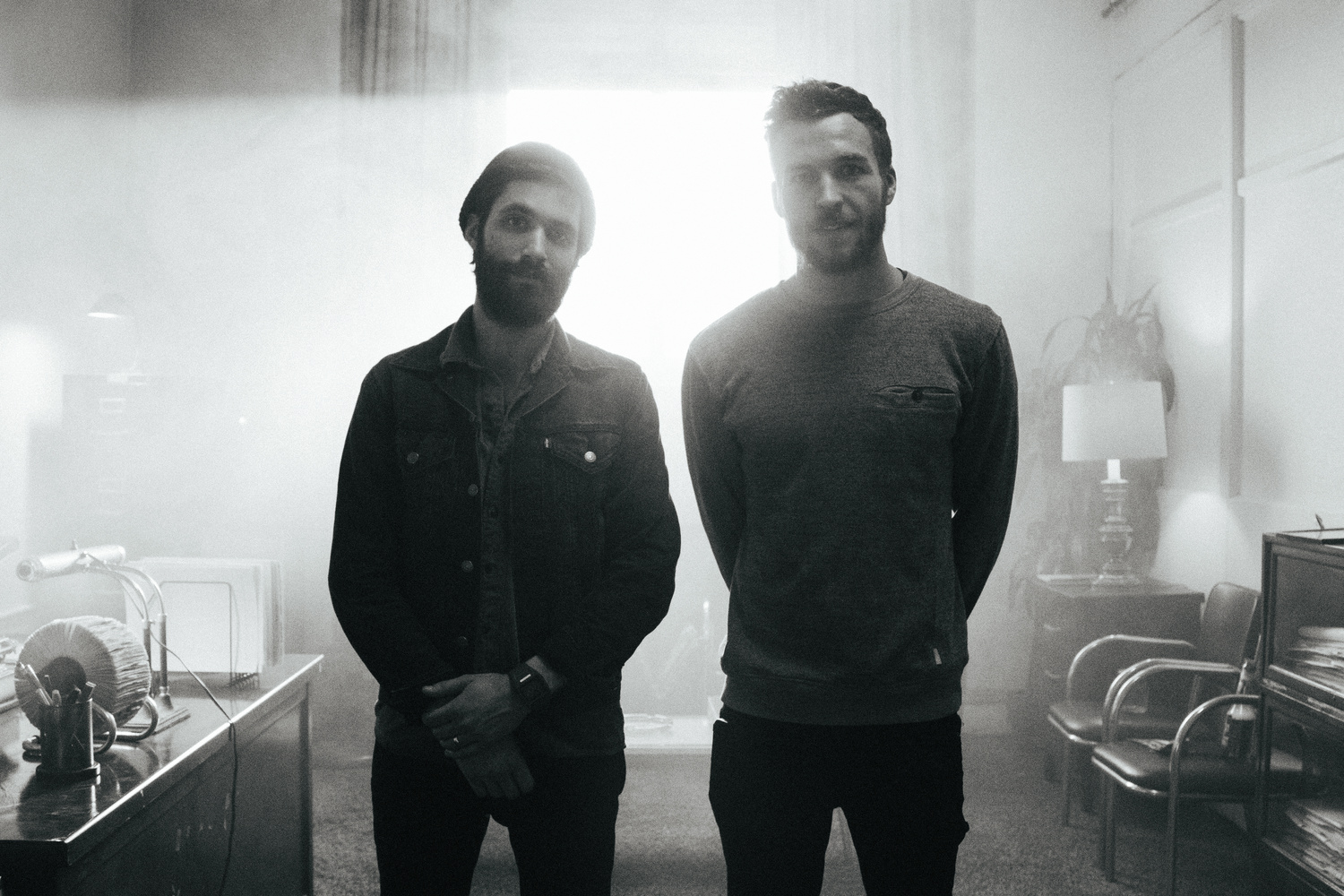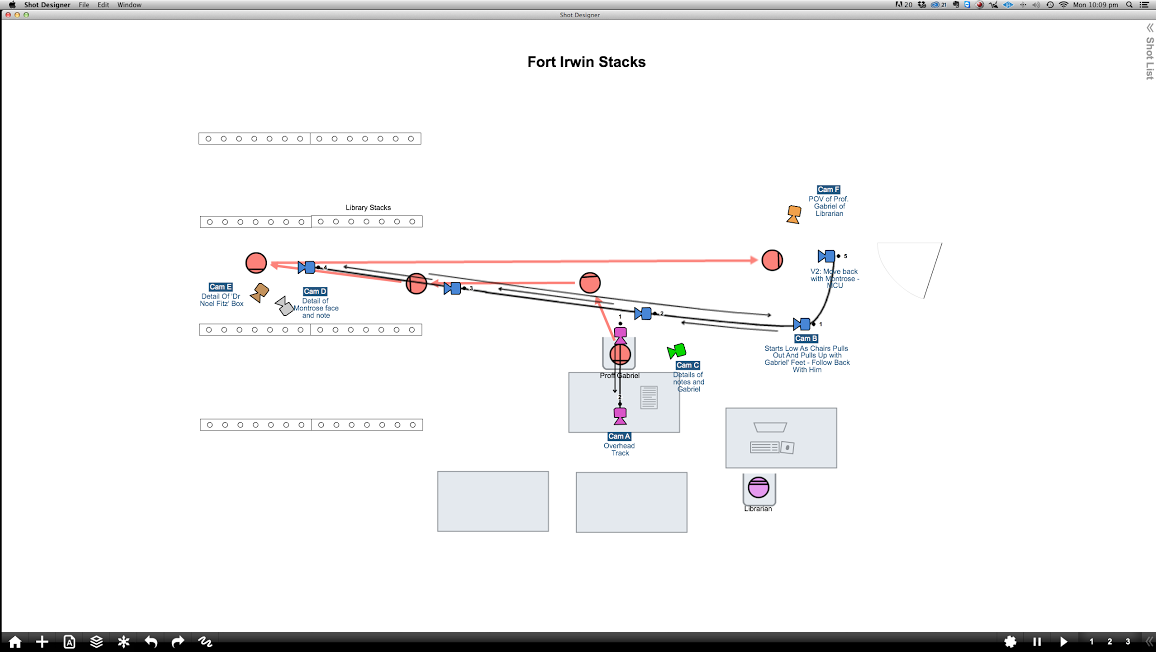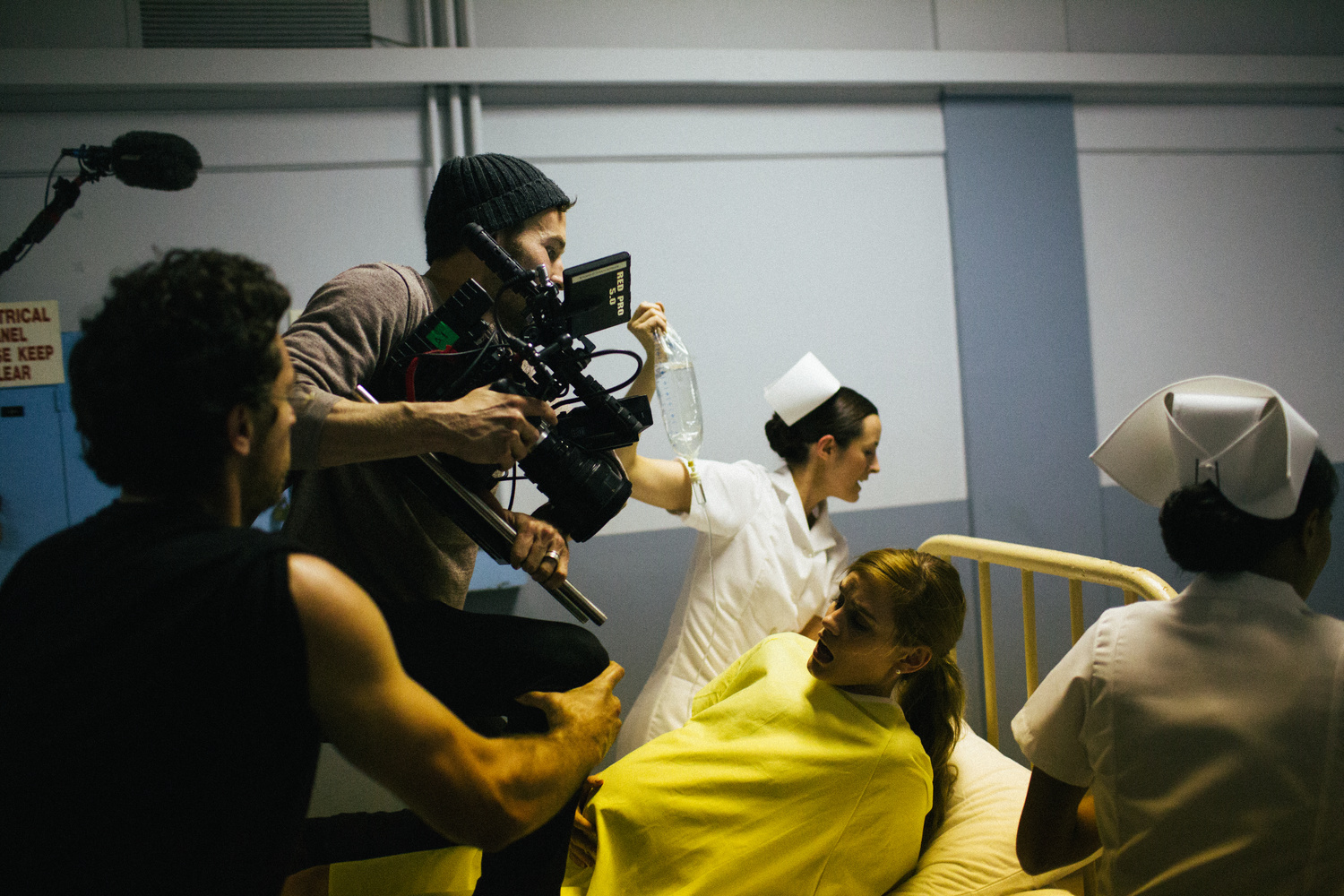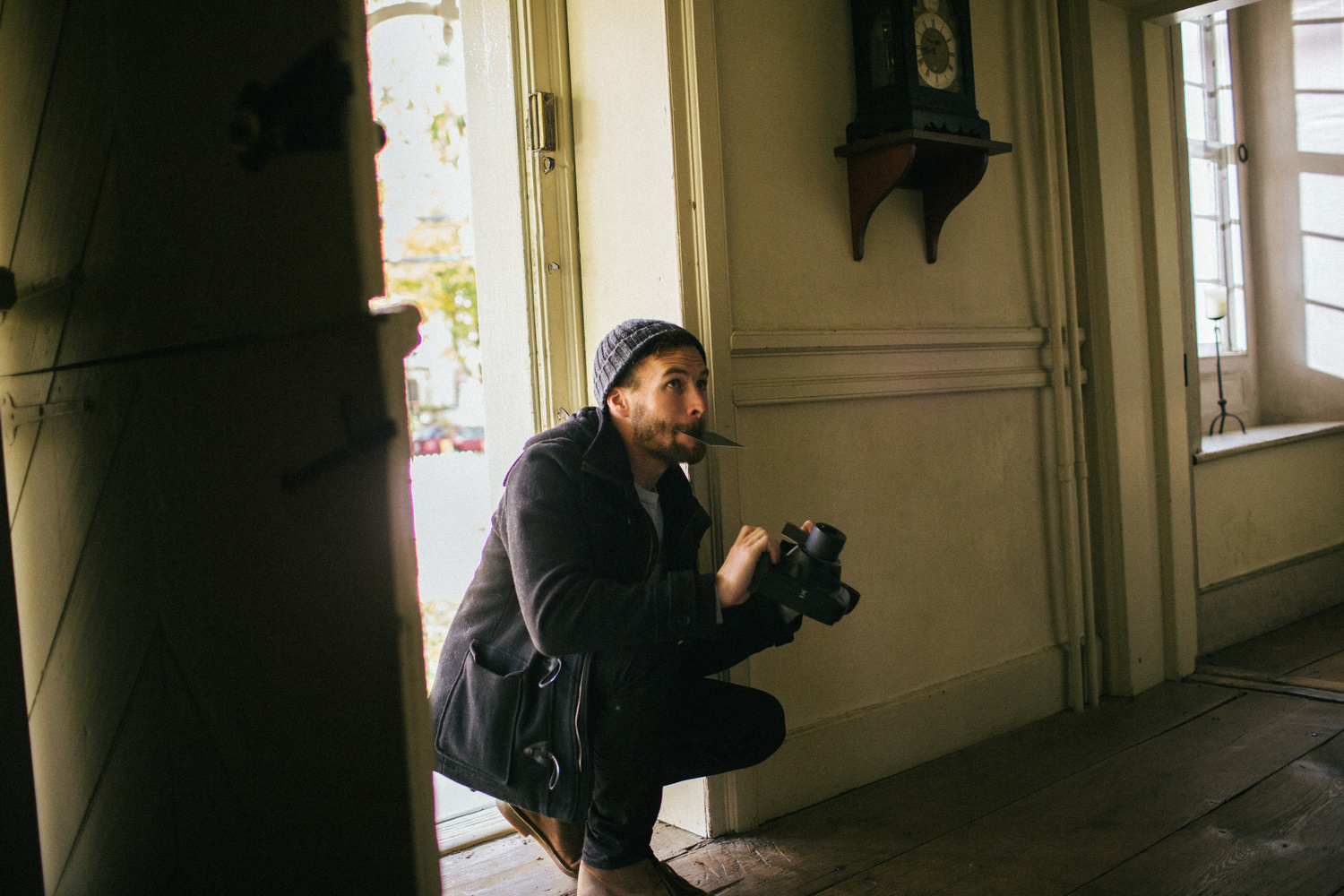Last week saw the release of ‘Anomaly’, a film that is redefining the approach and model for independent, narrative film making. Co-Director Salomon Ligthelm outlines how he managed the project as it grew from “a 2 minute art film” into the astonishing 38 minute-long final masterpiece, and provides key takeaways for all of us that we can apply to our own stills or motion projects. If you have any interest in what's coming over the horizon for cutting edge, independent, visual media production, this is for you.
Anomaly is an prime example at what can be achieved when talented and passionate people collaborate and are motivated through passion for their craft. It was made on a (comparatively) shoestring budget of about $60k, which was funded successfully through a Kickstarter campaign.
Great acting, amazing art direction, brilliant visual and aural production and 'Hollywood-level' VFX all culminate in an astounding narrative project. Described as being about “broken relationships and an astronomical event that intertwines the various narrative threads”, the best way to experience and understand Anomaly, is to simply watch it (it's totally free and available on Vimeo - posted below)
Anomaly is more than just a great piece of film-making. It's a model for the changing landscape of small scale, high impact, independent and collaborative film-making projects, and there is much to learn from how the crew pulled it off. I was very fortunate to get some time with Salomon Ligthelm (Salmon and his friend/collaborator Dan DiFelice directed Anomaly jointly) to explore how he, Dan and the crew made it all happen.
The main point of this article is to look at what has made Anomaly so successful, to really try to unpick how Salomon and the team were able to realize this project. There is so much we can all learn from these guys, whether we are working on projects funded to the tune of $60, $6,000 or $60,000.
I know the insights he shares can apply to any multitude of our own projects. What follows are some of the key points that dropped out of this interview, and how they can apply to all of us:
The Importance of Collaboration
Without a doubt, collaboration is probably the single most critical element that has led to the success of Anomaly as a stand alone final creative product.
Like many of us, Salomon started out as a “one man band”, shooting, editing and color grading all by himself. Many of us start out like this but you can’t be a master of everything. The ability to collaborate with others is critical to get to the next level. Salomon talked to me about his evolution:
Dan and I are realizing now, especially with such a great online community of like-minded film-makers, that […] our projects will actually be much stronger if we relied on people who are very skilled in their respective departments. Good directors aren't great at every facet of production, but they know how to build a team that is great at their respective crafts.

As Salomon explained, this isn’t always easy:
I was nervous because I knew Khalid [Mohtaseb, Director of Photography] had a very particular way of working, and my way of working was very loose - but we actually found a great rhythm on set. He wouldn't just be satisfied getting the standard coverage, he wanted to get what was outside the scope of the script - stuff we could use creatively throughout the film. I loved his passion on set, it was infectious.

Interestingly, Anomaly was a project with two directors collaborating together. I was interested to find out how this collaborative partnership had worked.
[Dan would] focus on VFX and I would focus on sound and score. That is why we needed two directors. I remember Dan and I having a chat about how we would work it - we agreed that on this project, that I would work more with actors (as I wrote the script) and Dan would focus more on the visual side of things - helping Khalid capture the images. We both could talk into each other's assigned responsibility, but we decided that we would take a moment to discuss things in private and then provide a united front to the actors/crew. That worked extremely well in the end, and we figured out a good flow and both had kind of the same ‘voice’.


Many times throughout the interview, Salomon referenced the expertise of his friends and collaborators:
I can't tell you how stoked we are with what Khalid did as a DP, what Joe did as an Art Director, what Ryan did as a composer, what Dallas and his team at Defacto did with sound, what the Mill and Framestore and the countless digital artists did in VFX, what Byron did with design..the list goes on and on. We couldn't have done that ourselves - NEVER! This project is strong, only because we acted as directors, communicated our vision all the way through, but then released the team to do what they are insanely gifted at.
As Salomon has outlined, building trusted teams around you enables you to deliver more than you ever could by yourself. Personally, I have experienced this several times this year – both as someone who has directed others, and as someone who was being directed. Even if you are “just a photographer” on a small set, your role is still to direct and manage your clients, your subjects, and make them all feel comfortable and at ease before, throughout and after the shoot. You will need to connect and collaborate with good people and have them support you if you wish to grow in the projects you undertake and the work you are able to deliver.
Going ‘Off Script’ To Better Tell The Story
Some of the most 'human' moments were captured when we abandoned the shot list and just allowed the actors to play. I'm really after is something that feels natural/honest. I said to the actors that I'd love not to hear the same lines as was in the script. This concept of having a script but applying it loosely, is a great example of allowing our subjects a chance to “breathe” and express themselves. These moments of freedom sometimes can lead to the strongest, most natural performances or looks.

Pre-production blocking and scene shot sequencing shows careful planning and a strong framework for how coverage would be shot for each scene - but also provided confidence to the crew to allow for moments when looser, 'off script' action could occur for natural, organic shots to be picked up

It doesn’t matter what we are shooting, the art of using our images to tell a story should always be the primary focus. Salomon’s approach, of having a plan, but being loose with it to allow the team to capture natural and “human” moments are something we can all bear in mind. It's not easy, especially as projects get larger, and constraints become tighter, but keeping this organic approach will allow those in front of the camera the freedom to express themselves more naturally.

Awareness On Set / During Shooting
Anomaly if made up of often very short beautiful moments. The energy and atmosphere on set helped create instances where moments like these happened. Salomon explained:
I remember the playful bedroom scene - the room had such loud creaking floors that I asked the crew to take their shoes off and shoot with only their socks on - we asked everyone else to leave the room, so it was just key crew. We were walking so softly on those floors, trying to be as 'invisible' to the actors as possible and also trying to be as quiet as possible. It was such a great moment, that I will forever remember.

Being aware of creating the "right energy" or mood and environment is critical to allow your talent, clients and other crew members to all get into the right frame of mind. This might sound like fluffy nonsense, but never underestimate this sensitivity to what is being created on set, and the ability to take small actions (like trying to be as quiet as possible, or closing the set to all but the absolute minimum number of people required, as Salomon did) to allow for small magical moments to occur that you can capture.
The Importance Of Personal Projects
How many projects did you undertake this year that paid you well but you didn't really enjoy or you didn't really feel passionate about?
Some projects pay bills, some we just want to do for the love, and sometimes we are lucky and a project will tick both boxes. Salomon is very focused on only undertaking work that he truly feels inspired by. If the project doesn't exist, he simply goes out there and creates the work for himself by showing the world his vision.
This approach is not new. In the internet age, putting the work out there is enough to launch careers, but it's a useful reminder that it’s absolutely possible to create the work you want for yourself. Salomon and Khalid are both excellent examples of this way of generating impact through personal projects, and getting paid work off the back of interest generated from personal work.
Salomon provided detail on his own progression:
When I started, I had the luxury of doing sound work that didn't keep me busy for a whole 9-5 work week. This meant that I'd go out shooting some lo-fi passion work - that work soon got noticed. I soon realized the power of the internet and put my work online - next thing you know I'm chatting to Khalid on Vimeo (this was 4 years ago) and also chatting to some good creative crew in Sydney, Australia. Not long after that, I met Khalid in Dubai (where I was living at the time) and formed a new friendship, and then a few months later, my wife and I moved to Sydney all because of passion work and new online friendships.
The clear message from this is if you aren’t doing as much of the work you want to be booked for, you just have to get out there and start shooting it – and if you don’t, then you can be sure someone else will.

Gear / 'Our Tools'
A few years ago, Salomon was shooting with a Canon 7D. Now, after several years of saving, he recently invested in a RED Epic. You would think gear would be of supreme importance but his attitude towards this is interesting, as he explains:
Gear is less important to me these days - I'm much more interested in telling the story with the right tools. I think you can see that in my recent work (which includes Anomaly) where I've started using very badly compressed archival footage, purely because it evokes such strong nostalgic emotion. When I started, I wouldn't want to touch anything that didn't feel like HD DSLR or RED footage. Nowadays I don't mind using 320x240 footage alongside 5K RED footage as long as it tells the story and evokes some type of emotional response.

We all experience this cycle. Initially we want the best “professional” gear. As you work your way up the gear ladder, you begin to realize gear only goes so far in terms of booking you work. Sure some people require the extra resolution, but looking back at Salomon’s earlier DSLR-shot work, like ‘Silent Transitions’, you can’t help but still be impressed with the emotion and strength of content he was creating.
This point is a great reminder that all the gear should only be in service of the story you wish to tell, and the emotions you want to create.
Overcoming Doubt
Have you ever started a project thinking it’s the best work you’ve ever done and by the end wondered if it was even any good? Self doubt affects all of us and Salomon is no different, as he explained:
I feel that feeling of inadequacy all the time. I feel it when I share the script with close friends, I feel it when I talk to the actors the first time, I feel it the first day on set, and during the first assembly (cut) of the film. I keep feeling that up until the last cut of the film just after sound design and grade. Up until that point, I think the project could be the worst thing I have ever done - literally - no lies. I even said to Dan just before Thanksgiving, "Maybe we shouldn't release this...I don't know if its any good."
But I remember in the last moments of sound mixing, watching the film with Dallas Taylor at Defacto Sound. Up until that point, I had not heard the film mixed yet. I remember listening and turning around to Dallas (who was sitting behind me) every 5 minutes saying “damn - I'm REALLY feeling it”... in those moments I emotionally connected to the film and its characters in way I hadn't yet before.
We all have self doubts. In our own eyes, our work is often never ‘good enough’ but if we aren’t putting it out there, we’ll never stand a chance of getting booked. As the saying goes, ‘you’ve got to be in it, to win it’. And remember, a project won't feel finished until it's complete - so make sure you judge your work when it's done, whether that's with the sound bed in and complete, or with the retouching work on your photography to a point where you are able to sit back and feel content that you've done the best you can. Judging your work midway through the post production cycle can be tricky, so always bear that in mind as you work the stages through to completion.

The Details Are What Matter (And What Most People Will Remember)
Ever had a project you just want to be over, to get out the door and deliver? As Salomon, explains, pushing hard at the final hurdle is critical:
I have this theory that a film at 98 percent done, will feel like a film at 25 percent to the average viewer. The last 2 percent of work that you put in can take a project from mediocre to incredible...I think a lot of people underestimate that - they abandon projects at 98 percent.
This is so important and the message is clear - don’t slack off at the end of a project and when that last hurdle is in site, sprint and jump like your life depends on it.
That final bit of polish is often the most significant element of the job. It’s really the icing and cherry on the cake, and can elevate the whole project. The closer we get to finishing something, the more we want to be done with it so while this isn’t easy, it’s something that’s incredibly important to the final experience of our client or audience. Remember, those final details or bits of polish are what will leave the lasting impression on your clients and your audience. Don't fall at the final hurdle by closing a project out at 98%.

Final Thoughts
Anomaly is, in many ways, astounding. It’s a triumph that has raised the bar for independent film-making. This isn’t just because of the quality of the project itself. It’s because of the way it’s changing the game for independently funded, collaborative ‘short’ films – from how they are conceived, funded, produced, made, distributed - and where these sorts of projects will take those collaborators involved.

Passion projects like these have helped Salomon and the crew carve out careers working on the sorts of projects they want to be involved in, creating virtuous circles of getting paid to create the work they are passionate about. As visual creatives – photographers or film makers – we should all be aiming to follow in these foot steps.
And we can. If we bear in mind what has been shared here, play to our strengths by bringing in like-minded collaborators to support our vision, and push ourselves throughout the entire project to the last hurdle, there’s no reason why we can’t create our own virtuous circles of fulfilling project work which leads to paid work of the same nature.
This is not rocket science, but does require dogged determination and commitment. I for one will constantly be looking at Anomaly as a tool to inspire me through my own work in 2015, and I hope it - and Salomon’s insight shared here - will help do the same for you.

Special Thanks To [Salomon Ligthelm]
All BTS Images Shot By And Courtesy Of [Duck Duck Collective]








Wow! This is just fantastic. Beautifully done.
I was so stoked to see this post this morning. I've been following his work for over a year now and this film speaks so much to the heart of his talent. He is behind much of the film and production for Hillsong Church, and I think for him this is just the beginning. Salomon is inspiring many folks working in the faith-based media world to challenge ourselves to think broader and bigger on how the gospel of Jesus can be told. Take the time to peruse his Vimeo account. The most recent promo trailer shot for Hillsong Conference 2015 (Speak We're Listening) is breathtaking. So proud of him and his team. Anamoly is incredible.
Thanks Andy, glad you liked the post and very much agree, his work is very inspiring and Anomaly is an incredible achievement. Can't wait to see where he and his crew go in 2015!
Watching this film was the best way for me to end the year. Marvelous. And this post just gives us more insight on how this extremely low-budget masterpiece was done. Thank you Fstoppers.
Thanks Samir, glad you enjoyed the post and very happy you discovered Anomaly as a result.
This is amazing. Amazing movie and an amazing article. This year I wanted to do more videos for myslef rather than other companies, and Ive been stuck in a rut for the past couple of months on how to go about it. This article is very inspiring! Thank you.
Just the sort of comment that inspires me to put the work in to do these articles. Thank you so much Arif, glad it struck a good chord, and appreciate you taking the time to feed back. Good luck on getting out of the rut in 2015, i'll be right there alongside you :)
Thanks for the breakdown on this work, and for making me aware of it. It is a common refrain with this sort of piece to hear, "I would like to hear more about the budget." What are the details? Being charitable, a Red Epic Shooter package costs more than $45,000. Surely that information might help viewers understand a little bit better the cost, and craft, required to achieve the stunning visuals on display here. Leaving the camera out, how did a production of a seemingly large-ish scale come about on a relatively tight budget? Usually the simple answer is, "I called in a lot of favors," and that's fine. I understand that collaboration plays a big part in all storytelling efforts. I wish not to be critical but constructive; bloggers are not beholden to the old classic rules that newswriters had to follow in the old days. And I am a reader who has a strong interest the sort of creative powers you are trying to shed light upon. But I've seen these kinds of stories before. A few details like, "We got several big locations for next to nothing because my cousin is a realtor," or "The digital post company worked for a fraction of its usual costs because they're trying to build a reel" is important. Not only does it fill in unanswered questions, but it spotlights the social craft and flat out luck that goes into the mix. Moviemaking is not alchemy, it is craft. Well, some of it is alchemy. But that x-factor usually happens on set, or in the edit. Putting a small budget number out there and not providing anything but vague detail as to how a solid result was achieved with meager means seems more like marketing than journalism.
Hi Tony, glad you enjoyed the post.
They raised $67k through Kickstarter as mentioned and i believe many people, including the digital artists, worked for free. If you drill more into Anomaly, Salomon and the online and interviews, this stuff is pretty freely discussed, but not really the point of this article. I'm not sure what you mean by 'marketing' too as i have nothing to do with any of these guys or the production.
I think that focusing purely on the break down somewhat misses the point of what i was conveying.. As i said " There is so much we can all learn from these guys, whether we are working on projects funded to the tune of $60, $6,000 or $60,000."
Salomon started as a one man band with zero budget self funded gear and projects on a 7D and a 30mm Sigma. This project was directly as a result of people working for free/below market rates and wanting to collaborate on something special. That can be a friend helping you with holding a light, or a bigger production like this. The important point for me is regardless of scale, we should all ask ourselves how we can get that sort of collaboration on projects we want to make, and not necessarily being paid to make.
Hey Tony
Thought I'd quickly shed some light on some of the stuff for you.
We did a Kickstarter campaign and raised $67K - of which $7K went back to KS and Paypal for admin fees.
We then raised another $7-10K on our own.
This all went to production, so we had $0 as a post budget. We had so many people helping us during production and post production - many if not all working for free. Most of our funds went into location and travel during production - the rest catering and a large chunk went into actors/talent.
Much of the reason why we were able to pull this off, is because we were working with friends - people who wanted to collaborate on a passion project and make something unique - ambitious as it was.
Fstoppers aren't marketing our film - just so you know. Neither is any other blog or publication - as we mentioned, we didn't have a budget for any marketing, or anything other than production. We're thankful for anyone who wants to spotlight that project, as we hope it gives other film-makers a bit of encouragement.
I do think we had something special on set - there were no egos, no sense of entitlement etc.
I think this made working on the project like this a real joy. For a lot of us - this was our first venture into narrative film-making - so working with established actors, agents etc, was super daunting. But we were extremely fortunate to work with incredibly gifted and generous folk.